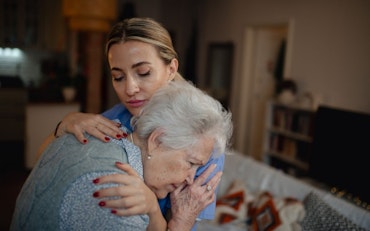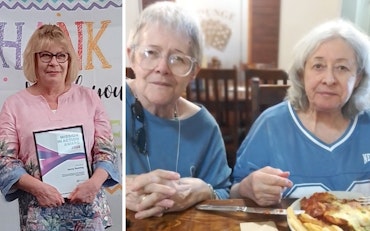New “one-stop shop” to improve pain management in aged care
A revised and expanded book and additional resources for pain management in residential aged care homes promises to be a “one-stop shop” to help improve care and minimise pain among residents.

Aged Care Minister Ken Wyatt launches the 2nd edition of ‘Pain in Residential Aged Care Facilities: Management Strategies’ this week. (Source: Twitter)
The publication of the 2nd edition of Pain in Residential Aged Care Facilities: Management Strategies by the Australian Pain Society will help Australia’s aged care workforce to identify, assess and manage pain felt by people in their care.
“This is about making a real difference to the daily quality of life of tens for thousands of senior Australians,” Aged Care Minister Ken Wyatt says.
“I commend the Australian Pain Society and the dozen dedicated co-authors of this critical resource.”
Australia has around 2,700 residential aged care homes, caring for up to 240,000 people a year. It is estimated that as many as 80 percent of people in care experience pain of some kind.
Minister Wyatt says access to high-quality pain management is a human right.
“Many aged care residents also have dementia and may have difficulty communicating their pain, which can lead to the risk of under-treatment,” he says.
“Working with organisations like the Australian Pain Society, the Government is building a system that gives senior Australians better quality of care, better access to care and more choices for longer, better lives.”
Fiona Hodson, President of the Australian Pain Society and co-author, says the second edition – the first update since the 2005 original – is more user-friendly and includes new supporting resources.
“It highlights resident-centred care, while acknowledging families as key partners in care,” she says.
“Best-practice pain management is important, as pain affects both quality of life and physical function.”
Palliative Care Australia Chief Executive Officer (CEO) Rohan Greenland welcomes the inclusion of a new chapter on pain at the end of life.
“60,000 Australians die in residential aged care facilities each year,” he says.
“This updated publication will help staff know how to recognise and manage the pain of residents so they can have the best quality of life, right to the end of life.”
“This updated resource is a valuable tool and we hope that it is not only made available within all residential aged care facilities in Australia, but also considered within policy and procedure reviews and staff training.”
Mr Greenland says ensuring resident’s pain is managed within residential aged care is “paramount”, especially towards end of life – an issue he says the organisation plans to raise with the Royal Commission into Aged Care Quality and Safety.
“A good first step would be to address the omission of palliative care within the Aged Care Quality Standards. This is something we will be raising…noting the terms of reference for this important inquiry also do not include palliative care.”
Mr Greenland says it’s important for residential aged care facilities to have access to medicines with strict legislative controls that may be required at the end of life, and have appropriately-trained staff available 24/7 to administer them.
“There must be investment in new collaborative models of care between palliative care and aged care, including the use of telehealth, nurse practitioner-led models, education, training and peer-support for aged care staff, and engagement of general practitioners outside of fee-for-service to assist in managing pain.”










